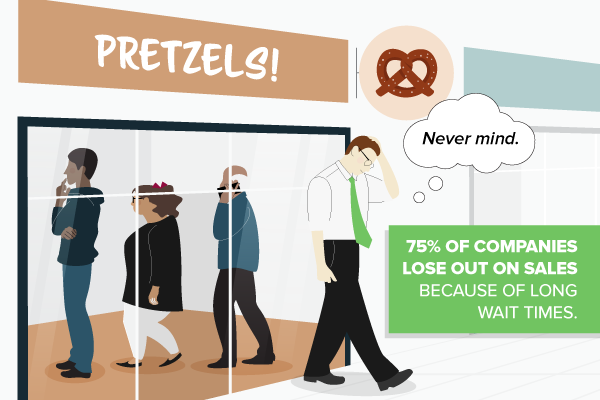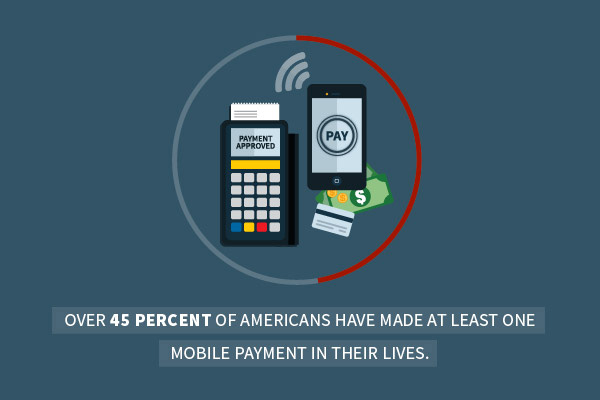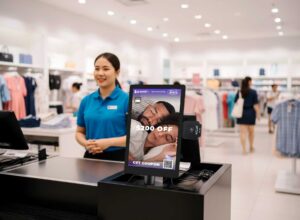In several ways, the restaurant industry is a microcosm of society at large: Most trends come and go, but certain kinds are built to last. While the pressure to serve appetizing food is always on, other areas of focus relating to service and community are now coming to the fore.
One of the main drivers of what restaurateurs aim to satisfy in the next year is their patrons’ time constraints. Nearly 80 percent of Americans are stressed, according to a recent poll by Gallup, due in large part to having too many things to do but not enough hours in the day to fit them all in. In short, people are putting too much on their plates.
Perhaps with time-crunched patrons in mind, here are a few of the concept trends the National Restaurant Association expects in 2018, several of which are tailor-made for mobile POS solutions, which are increasingly proliferating in the casual and fine dining industry.

Fast casual
Good food takes time, or so the saying goes, but the likes of Panera, Chipotle and Qdoba have proven otherwise. These are just three of the numerous fast-casual restaurant franchises that are taking up a larger slice of the restaurant options pie. Indeed, according to statistics compiled by Fox Business Network, more than 20,000 fast casual restaurants dot the country’s landscape. The fast-casual movement is expected to pick up the pace in 2018, with chefs in the driver’s seat, based on the National Restaurant Association’s prognostications.
Mobile and unattended POS systems were practically built for fast-casual restaurants because their primary functions are geared for speedy service. Instead of waiting at the table for servers to have their bills brought to them, customers can use pay-at-the-table systems and/or self check-out options to eat and be on their way. These have revolutionized the dining experience, both for patrons as well as restaurant staff. Additionally, integrated POS restaurant technology speeds up the ordering process, as menu options can be quickly selected with the touch of a button, then relayed to line cooks and chefs.
mPOS is poised to revolutionize the restaurant and service industry.
Food waste reduction
If there’s one thing that Americans toss out with abandon, it’s food – sometimes when it’s still good enough to eat, such as when they’re full or pressed for time. According to the National Resources Defense Council, of all the food that Americans purchase in the average year, roughly half of it eventually winds up in the garbage. That translates to an estimated 50 million tons of food waste annually.
“As much as 40% of the nation’s food supply is thrown away.”
Restaurants are part of the problem, as according to data from the U.S. Department of Agriculture, eateries and grocery stores throw out approximately 133 billion pounds of food every year, which is 30 to 40 percent of the nation’s food supply. The USDA, along with the Environmental Protection Agency, has urged the food industry to curb their food waste tendencies by – among other things – improving storage practices and being more discriminate with their inventory. The National Restaurant Association believes eateries will redouble their efforts to minimize waste in 2018.
Environmental awareness is something more Americans are concerning themselves with, and mobile/unattended POS systems are helping restaurateurs reduce their carbon footprint by going paperless. By taking orders electronically, restaurants have cut down on office materials and unnecessary staff. Additionally, more customers are opting to have their bills emailed to them, enabling customers to better manage their budget and tracking how they spend their money.
Taking a cue from farms, hyper-local restaurants may be the next craze.
Hyper-local
Customers not only want to know what they’re eating – in terms of caloric content and other nutritional facts – but where it comes from. That’s why more Americans are patronizing farmer’s markets, which are popping up in numerous communities around the country. Hyper-local is the next phase of the sustainability craze, as vegetable growers are finding they don’t necessarily need massive plots of land to plant crops. Some are transforming their rooftops into quasi-gardens.
The National Restaurant Association expects hyper-local restaurants to take root in 2018. Short of the resources – or space – to purchase bulky point of sale equipment, mobile/unattended POS is the ideal solution for hyper-local restaurateurs.Given the uptick in mobile payment transactions, these mPOS systems are frequently compatible with Apple Pay, Google Pay, PayPal and several other purchase platforms.
Related Articles:
Featured
The stage is set for increased mobile payment adoption. Are your clients equipped to accept NFC payments?
In the rush to buy “must have” gifts for kids, spouses and co-workers, there is one other, less enjoyable accessory to Christmas time: lines, and lots of them. Here’s how to combat lines during the holiday season.
Brick-and-mortar retailers and e-commerce companies are in the midst of a game of one-upmanship, a battle that features each side vying for a larger slice of the customer-loyalty pie.
Cloud computing makes maintaining and obtaining vast amounts of data possible. But do cloud-based point of sale systems offer advantages in other respects? You be the judge.
Here are 5 POS system traits that food trucks can’t afford to do without.
An increasing number of supermarkets are supplying patrons with a plethora of payment possibilities – with mobile POS in particular gaining traction.
Here are a few of the concept trends the National Restaurant Association expects in 2018, several of which are tailor-made for mobile POS solutions.
What you need to know about Apple Pay and Google Pay
Mobile point of sales systems give business owners the competitive advantage they need to stay one step ahead of rivaling retailers.
Nearly 9 in 10 consumers – 87 percent – say they’ll be scouring retail store aisles in search of the perfect holiday gifts, according to recent polling.












